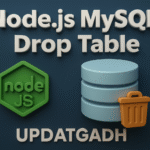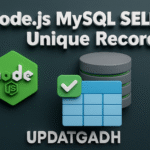
Top 15 Swift Interview Questions for 2025
Menu
Top 15 Swift Interview Questions
Swift, Apple’s powerful and user-friendly programming language, has gained enormous popularity in iOS and macOS app development. Whether you’re a seasoned developer or just beginning your journey, understanding common Swift interview questions can give you an edge. Here’s a look at some of the most essential Swift questions for 2025 that will help you shine in your next interview.

1. Describe Swift and explain how it is different from Objective-C.
- Answer: Swift is a powerful, intuitive programming language created by Apple for iOS, macOS, watchOS, and tvOS development. Unlike Objective-C, Swift is designed to be faster, safer, and easier to read. It offers modern language features like type inference, generics, and closures, and eliminates unsafe code constructs, such as null pointers, making it more secure and developer-friendly.
2. Explain optionals in Swift. Why are they important?
- Answer: Optionals in Swift are a way to indicate that a variable may or may not hold a value. Declared with
?, they help prevent runtime errors due to nil values. Swift’s optionals improve safety by forcing developers to handle nullability explicitly, reducing the chances of unexpected crashes.
3. What is type inference in Swift? Provide an example.
- Answer: Type inference allows Swift to deduce the type of a variable based on its initial value without explicit declaration. For example, if we declare
let number = 5, Swift infers thatnumberis anIntwithout needing to writelet number: Int = 5.
4. Explain the difference between ‘let’ and ‘var’ in Swift.
- Answer:
letis used to declare constants, which means the value cannot be changed once set.varis used for variables whose values can change after initialization. For instance,let name = "John"setsnameas a constant, whilevar age = 25allowsageto be modified later.
5. What are tuples, and how are they used in Swift?
- Answer: Tuples in Swift allow developers to create and return multiple values as a single compound value. For example,
let person = (name: "Alice", age: 30)allowsperson.nameandperson.ageto be accessed separately, making it handy for returning multiple values from a function.
Download New Real Time Projects :-Click here
6. What is the purpose of the guard statement in Swift?
- Answer: The
guardstatement is used for early exit in functions, ensuring that certain conditions are met. If the condition in aguardstatement fails, the program exits the current function or loop. This approach improves readability by reducing nested code, also known as the “pyramid of doom.”
7. Explain the concept of closures in Swift.
- Answer: Closures in Swift are self-contained blocks of functionality that can be passed around and used in code. They can capture and store references to variables or constants within their context. Closures are similar to blocks in Objective-C but more powerful and flexible, supporting concise syntax for in-line functions.
8. What are lazy properties in Swift? When should you use them?
- Answer: Lazy properties in Swift are properties that are only initialized when accessed for the first time. Declared with the
lazykeyword, they are helpful for expensive or time-consuming operations that don’t need to run until required, such as loading large data files.
9. What is a protocol in Swift, and how is it used?
- Answer: A certain functionality’s methods, characteristics, and other needs are outlined in protocols. Enums, classes, and structs can provide implementations by adhering to protocols. This allows for polymorphism, making Swift more flexible and facilitating the development of clean, modular code.
10. How does Swift handle memory management? Explain ARC.
- Answer: Swift uses Automatic Reference Counting (ARC) to manage memory, automatically allocating and deallocating memory as needed. ARC tracks the number of references to each object and frees it when there are no strong references left. To stop memory leaks, developers use strong, weak, and unowned pointers.
11. What is the difference between Structs and Classes in Swift?
- Answer: Structs are value types, while classes are reference types. This means structs are copied when assigned or passed around, whereas classes share a single instance across references. Structs also cannot inherit from other structs, making them ideal for simpler data models, while classes support inheritance and are suited for more complex structures.
https://updategadh.com/category/php-project
12. What are generics in Swift? Why are they useful?
- Answer: Generics allow developers to write flexible and reusable code by creating functions and types that work with any data type. For instance, a generic
swap<T>(a: T, b: T)function can swap values of any type. Generics help reduce code duplication and enhance type safety.
13. How can you achieve error handling in Swift?
- Answer: Swift uses the
do-catchstatement for error handling. Functions that might throw an error are marked withthrows, and errors are caught within thecatchblock. This allows graceful handling of potential errors, improving app stability.
14. What is Combine in Swift, and why is it important?
- Answer: Combine is Apple’s reactive programming framework for handling asynchronous data and event streams. It simplifies working with data changes over time, especially in complex scenarios involving multiple data sources, by providing a unified, declarative approach to data flow.
15. Explain the @objc attribute and its significance.
- Answer: The
@objcattribute allows Swift code to interoperate with Objective-C. It enables Swift methods and properties to be accessible from Objective-C runtime, making it crucial for using legacy Objective-C code or libraries within Swift projects, as well as leveraging dynamic features like selectors.
- top 15 swift interview questions and answers pdf
- top 15 swift interview questions for senior developer
- top 15 swift interview questions 2024
- top 15 interview questions for freshers
- top 15 swift coding questions for interview
- swift interview questions and answers for experienced
- swiftui interview questions
- ios interview questions
- top 15 swift interview questions and answers pdf
- top 15 swift interview questions and answers
- top 15 swift interview questions for experienced
Post Views: 681










Post Comment